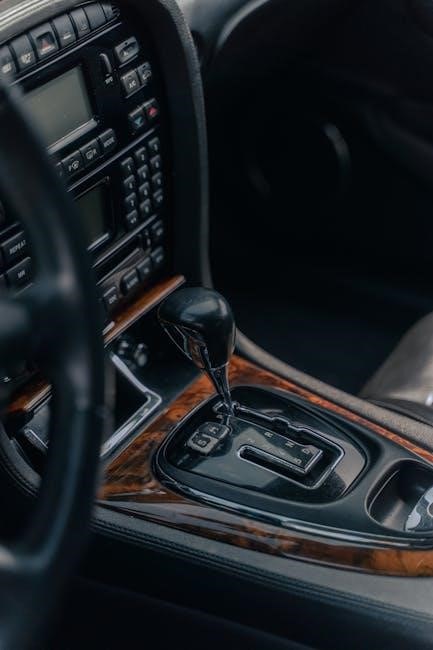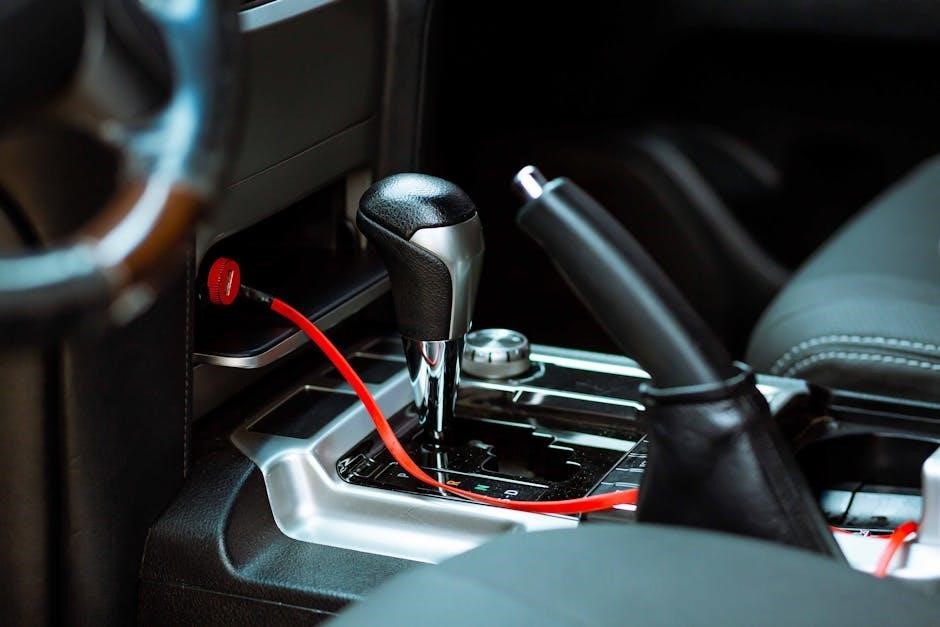
IS300 Manual Gearbox Conversion: A Comprehensive Guide
The Lexus IS300, never offered with a manual transmission from the factory, presents an exciting opportunity for enthusiasts. This guide provides a comprehensive overview of converting your automatic IS300 to a manual. Exploring various transmission options and considerations, it will provide knowledge for a successful swap.
The Lexus IS300, a popular choice among car enthusiasts, was unfortunately never offered with a manual transmission from the factory. This fact has driven many owners to undertake manual transmission swaps, seeking to enhance the driving experience and unlock the car’s full potential. This guide aims to provide a comprehensive overview of the IS300 manual swap process.
Swapping an automatic transmission for a manual one in an IS300 is a complex but rewarding project. It requires careful planning, a thorough understanding of the components involved, and attention to detail. Several transmission options are available, each with its own set of advantages and disadvantages.

From the W55/W58 to the CD009 and T56 Magnum-F, selecting the right transmission is crucial. This guide dives into these options, highlighting compatibility, required modifications, and overall cost considerations. Furthermore, it addresses the essential parts and components needed for a successful swap, including clutch kits, flywheels, and pedal assemblies.

We will also explore the step-by-step process of removing the automatic transmission, modifying the electrical system, and addressing ECU compatibility. Considerations for the driveshaft and a detailed cost analysis are also included. This guide aims to equip you with the knowledge needed to approach an IS300 manual swap with confidence.
Why Consider a Manual Swap for Your IS300?
For many IS300 owners, the factory-installed automatic transmission leaves something to be desired. A manual swap offers a transformative experience, enhancing driver engagement and control. The ability to precisely select gears provides a more connected feel, making the driving experience more spirited and enjoyable. This is especially appealing to those who enjoy spirited driving or track days.
Beyond driver engagement, a manual swap can improve performance. Manual transmissions generally weigh less than automatics, reducing overall vehicle weight and improving acceleration. The direct connection between the engine and wheels in a manual setup can lead to better responsiveness and power delivery. This is a significant advantage for those seeking to maximize their IS300’s performance.
A manual swap can also offer increased reliability. Automatic transmissions, especially older ones, can be prone to failure. A properly installed manual transmission, with regular maintenance, can provide a more durable and reliable drivetrain.
Finally, a manual swap can increase the value of your IS300, especially among enthusiasts. A well-executed manual conversion can set your car apart and make it more desirable to buyers who appreciate the enhanced driving experience and performance. In short, a manual swap is an upgrade that improves the driving experience of the IS300.
Available Manual Transmission Options for the IS300
Several manual transmission options exist for the IS300, each with its own pros, cons, and level of complexity. The Aisin W55 and W58 transmissions are popular choices due to their relative affordability and ease of installation. These five-speed transmissions were commonly found in Toyota Supras and other models, making them readily available in the used market. However, they may not be ideal for high-horsepower applications.
For those seeking a more robust option, the CD009 six-speed transmission, sourced from the Nissan 350Z and 370Z, is a strong contender. This transmission is known for its durability and smooth shifting. However, installing a CD009 requires adapter kits and modifications to the transmission tunnel.
The Tremec T56 Magnum-F six-speed transmission is the ultimate choice for high-performance builds. This transmission is incredibly strong and can handle significant amounts of power. However, it is also the most expensive option and requires extensive modifications for proper fitment.
When selecting a transmission, consider your budget, power goals, and intended use for the car. The W55/W58 are suitable for street cars with moderate power upgrades, while the CD009 and T56 Magnum-F are better suited for high-performance applications. Researching each option thoroughly and consulting with experienced IS300 enthusiasts will help you make the best decision for your needs.
W55/W58 Transmission Swap: Overview and Considerations
The W55 and W58 transmissions are popular choices for IS300 manual swaps due to their simplicity and relatively lower cost compared to other options. These Aisin-Warner transmissions were commonly found in various Toyota models, including the Supra, making them readily available on the used market. While not the strongest transmissions, they can handle moderate power levels, making them suitable for street-driven IS300s with mild modifications.
When considering a W55/W58 swap, several factors should be taken into account. First, ensure the transmission is in good working condition, as used units may have wear and tear. Inspect the gears, synchros, and bearings for any signs of damage. It’s also recommended to replace the clutch, pressure plate, and throw-out bearing for optimal performance.
Another consideration is the gear ratios. The W55 and W58 have different gear ratios, so choose the one that best suits your driving style and intended use for the car. The W58 typically has slightly taller gears, which can improve fuel economy on the highway.
While the W55/W58 swap is relatively straightforward, it still requires some modifications. You’ll need a manual transmission pedal box, master cylinder, and clutch line. Additionally, you’ll need to modify the driveshaft to fit the transmission. While these transmissions can be a cost effective swap, they are not suited for high horsepower builds.
CD009 (350Z/370Z) 6-Speed Swap: Kit Components and Compatibility
The CD009 6-speed transmission, found in the Nissan 350Z and 370Z, has become a popular choice for IS300 manual swaps due to its strength and availability. Unlike the W55/W58, the CD009 can handle significantly more power, making it ideal for modified IS300s. Several companies offer complete swap kits to facilitate this conversion.
A typical CD009 swap kit includes an adapter plate to mate the transmission to the 2JZ or 1JZ engine, a custom flywheel, a clutch kit, and a transmission mount. Some kits also include a modified driveshaft or a driveshaft adapter. These kits are designed to simplify the installation process and ensure proper fitment.
When choosing a CD009 swap kit, it’s important to consider compatibility. Ensure that the kit is designed for your specific engine and IS300 model year. Some kits may require modifications to the transmission tunnel or the shifter location. It’s also important to research the quality and reputation of the kit manufacturer.

While the CD009 is a robust transmission, it’s essential to use a high-quality clutch kit to handle the increased power. A stronger clutch will prevent slippage and ensure smooth engagement. Upgrading the clutch master cylinder and slave cylinder is also recommended. The CD009 swap provides a modern 6-speed solution.
T56 Magnum-F 6-Speed Swap: An Overview
The T56 Magnum-F 6-speed transmission represents a premium option for IS300 manual conversions, favored for its exceptional strength and precise shifting. This aftermarket transmission, known for handling high horsepower applications, offers a robust solution for those seeking maximum performance. The T56 Magnum-F is a popular choice among enthusiasts building high-powered IS300s.
Unlike other swap options, the T56 Magnum-F typically requires a more involved installation process, often necessitating modifications to the transmission tunnel. However, its superior strength and performance capabilities justify the additional effort for many builders. Specific swap kits are available to aid in adapting the T56 Magnum-F to the IS300 chassis and engine.
These kits generally include an adapter plate, a custom bellhousing, a clutch kit designed for the T56, and a transmission mount. Depending on the kit, a custom driveshaft or modifications to the existing driveshaft may be necessary. Careful attention should be paid to selecting a kit that is compatible with your engine and power goals.
When considering a T56 Magnum-F swap, it’s crucial to factor in the increased cost compared to other transmission options. However, the enhanced durability and performance make it a worthwhile investment for those planning significant engine upgrades. Proper installation and tuning are essential to maximize the benefits of this high-performance transmission. The T56 is a robust option.
Essential Parts and Components Required for the Swap
Undertaking an IS300 manual transmission swap necessitates gathering a comprehensive list of essential parts and components. The core of the swap, of course, is the manual transmission itself, such as a W55/W58, CD009, or T56 Magnum-F, each with varying levels of complexity and compatibility. Beyond the transmission, a suitable clutch kit is crucial, matched to the chosen transmission and engine power output to ensure proper engagement and torque handling.
A flywheel designed for the 2JZ or 1JZ engine, compatible with the selected clutch, is also vital. Adapter plates and custom bellhousings are often needed to mate the new transmission to the engine. A manual transmission pedal box assembly, including the clutch and brake pedals, replaces the automatic setup. The master cylinder and slave cylinder are necessary for hydraulic clutch actuation.
A custom or modified driveshaft is typically required to connect the manual transmission to the IS300’s differential. Shift linkage or a shifter assembly allows for gear selection. ECU considerations often lead to needing a standalone ECU or modifications to the existing ECU. Wiring harnesses and connectors facilitate proper electrical connections.
Various smaller components like bolts, nuts, fluids, and lubricants are also essential. Depending on the chosen transmission, a new center console or modifications to the existing one may be necessary to accommodate the shifter. Gathering all these parts before starting the swap ensures a smoother and more efficient process.
Step-by-Step Guide to the Manual Transmission Swap Process
The IS300 manual transmission swap is a complex undertaking, requiring careful planning and execution. First, gather all necessary parts and tools. Disconnect the battery and prepare the vehicle by lifting it safely on jack stands. Begin by removing the automatic transmission, disconnecting all associated wiring, cooling lines, and the driveshaft.
Remove the automatic transmission cooler lines. Install the manual transmission pedal box assembly, ensuring proper alignment and secure mounting. Install the clutch master cylinder and route the hydraulic lines. Install the flywheel and clutch assembly onto the engine, following torque specifications meticulously.
Mount the manual transmission to the engine, using any necessary adapter plates or bellhousings. Connect the driveshaft, ensuring proper length and alignment. Install the shifter assembly and linkage. Address the electrical system, wiring the reverse lights, neutral safety switch, and any other necessary connections.
Modify or replace the ECU as needed for manual transmission operation. Fill the transmission with the correct type and amount of fluid. Reconnect the battery and test all systems, including clutch engagement, gear selection, and electrical functions. Finally, lower the vehicle and perform a thorough road test, checking for any issues or abnormalities.
Modifying the Electrical System for Manual Transmission Operation
A significant part of the IS300 manual swap involves modifying the electrical system to ensure proper operation with the new transmission. The automatic transmission control unit (TCU) must be bypassed or removed, and the wiring adapted to accommodate the manual transmission’s requirements. This includes wiring for the reverse lights, which are activated when the transmission is in reverse gear.
The neutral safety switch, which prevents the engine from starting unless the transmission is in neutral or park, needs to be properly wired to allow starting only when the clutch pedal is depressed. The vehicle speed sensor (VSS) signal may need to be recalibrated or adapted to work correctly with the manual transmission’s output.
Additionally, the ECU may require modification or replacement to eliminate error codes related to the missing automatic transmission. This might involve reflashing the ECU with a manual transmission tune or using a standalone ECU. Proper wiring diagrams and a thorough understanding of the IS300’s electrical system are crucial for a successful modification. Ensure all connections are secure and properly insulated to prevent shorts or malfunctions.

Careful attention to detail during this process will ensure that all electrical functions operate as intended with the manual transmission.
Addressing ECU Compatibility and Wiring
ECU compatibility is a critical aspect of any IS300 manual transmission swap; The original ECU is programmed to work with the automatic transmission, so adjustments are necessary for seamless integration with a manual gearbox. One approach involves reflashing the factory ECU with a manual transmission calibration. This eliminates error codes related to the missing automatic transmission and ensures proper engine management.
Alternatively, a standalone ECU offers greater flexibility and control over engine parameters. However, it requires extensive tuning and wiring expertise. Regardless of the chosen ECU solution, proper wiring is essential; The wiring harness needs modification to accommodate the manual transmission’s sensors and switches, such as the reverse light switch and neutral safety switch.
Careful attention must be paid to pinouts and wire routing to avoid shorts or malfunctions. Some swaps may require additional wiring for features like cruise control or traction control, depending on the desired functionality. Professional wiring services can ensure accuracy and reliability. Thoroughly documenting all wiring changes is crucial for troubleshooting and future maintenance. Addressing ECU compatibility and wiring correctly ensures optimal performance and reliability after the manual transmission swap.
Removing the Automatic Transmission: A Detailed Explanation
Removing the automatic transmission from your IS300 requires careful attention to detail and a systematic approach. Begin by disconnecting the battery to prevent electrical shorts. Next, raise the vehicle securely on jack stands, providing ample room to work underneath. Drain the automatic transmission fluid to minimize spills during removal.
Disconnect all electrical connectors and vacuum lines attached to the transmission. Remove the driveshaft by unbolting it from the differential and sliding it out of the transmission. Support the transmission with a transmission jack to prevent it from falling once the mounting bolts are removed. Unbolt the transmission crossmember and carefully lower it.
Next, unbolt the transmission from the engine block, ensuring all bolts are removed before attempting to separate the transmission. Once the bolts are removed, carefully lower the transmission using the transmission jack. Maneuver the transmission out from under the vehicle, taking care not to damage any surrounding components. Inspect the flexplate and remove it from the engine. Finally, clean the engine block surface in preparation for installing the manual transmission. This detailed process ensures a safe and efficient removal of the automatic transmission.
Cost Analysis of an IS300 Manual Transmission Swap
Driveshaft Considerations and Modifications
When converting your IS300 from an automatic to a manual transmission, the driveshaft becomes a critical component requiring careful consideration. The driveshaft length and design are specific to the transmission type, meaning the original automatic transmission driveshaft will likely not be compatible with the new manual transmission. Therefore, modifications or a completely new driveshaft are often necessary.
Several options exist for addressing this issue. One approach involves modifying the existing driveshaft by shortening or lengthening it to match the manual transmission’s specifications. This requires precise measurements and welding to ensure proper balance and structural integrity; Another option is to purchase a custom-made driveshaft designed specifically for the IS300 manual swap. These custom driveshafts are typically made from stronger materials and are precisely engineered for optimal performance and durability.
When selecting a driveshaft solution, consider factors such as the transmission type, vehicle power output, and intended use. A high-performance driveshaft may be necessary for vehicles with increased horsepower or those frequently used for racing. Proper installation and alignment of the driveshaft are crucial to prevent vibrations and ensure smooth power delivery. Consulting with a driveshaft specialist can help determine the best solution for your specific needs and ensure a reliable and safe manual transmission swap.